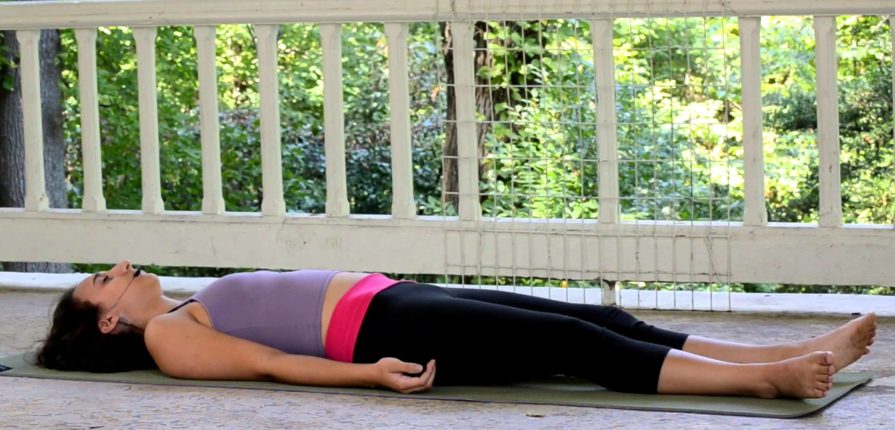Featured in Deccan Herald
But stay awake

Just as the rendezvous of the water and the land on a beach, so is yoga nidra the sweet venue of where the conscious and subconscious mind meet.
Yoga nidra or yogic sleep ensures that both the body and the mind are at rest; it helps cool the body after an intense yoga session by enabling us to focus our energy and attention on different parts of the body, effortlessly relaxing ourselves.
Yoga nidra, like meditation, is a powerful tool to rejuvenate and synchronise our inner and physical selves. It is essential that there is no forced way to luxuriate ourselves in this posture, rather, the unwinding must flow through us naturally.
However, unlike meditation, yoga nidra doesn’t require you to chant any mantra or practise a state of being without thoughts.
Why must one practise yoga nidra?
The exercise acts as a means to reduce stress levels in the body, leaving you with a sense of bliss.
Yoga nidra is a one-stop solution for those suffering from insomnia. The performance of yogic sleep aids in calming the nervous system and the mind, priming your system to receive a good amount of quality sleep.
This type of unwinding helps in burning the negative thoughts that have sunken into our subconscious mind by re-programming it in a way that serves us.
It brings in a sense of joy and a feeling of overall well-being.
It helps us connect with ourselves.
Prepare yourself
Find a comfortable spot to begin your practice. This could be on your yoga mat or on your bed. The spot that you choose must be clutter-free.
Ensure that you will not be disturbed by anything or anyone during the
your practice. You might want to put away your phone as well.
The practice will require you to train your mind, taking it from point to point and place to place on your body.
You can perform yogic sleep in anywhere between 15 minutes and half-an-hour.
Refrain from falling asleep during
your practice but if you do, there is no problem. Try to focus, but don’t be too hard on yourself.
How to do it
Lie down straight on your back with your eyes closed.
Gently breathe in and out. Exhale as much as you inhale.
Begin by observing your thoughts. Connect to your higher self and relax your body.
Pay attention to the sounds around you; become aware of it and gradually disconnect from the sound.
Now, beginning your practice, picture and feel a wonderful white ball of energy moving clockwise through your right leg: your thigh, calf muscles and feet. Pay attention to the sensation. Feel the same energy flow down the left leg.
Perceive the flow of energy through
all of your chakras: the root chakra,
the sacral chakra, the solar plexus chakra, the heart chakra, the throat chakra, the third-eye chakra and the crown chakra.
Place your awareness on your right hand: the fingers, palm, wrist, forehand and arm. Do the same on your left side.
Feel the energy on your face, cleansing and aligning your outer self with your higher self.
When you are ready, slowly bring your focus to your surroundings.
Rub your palms together for a minute and press your warm hands onto your eyes.
You may rest for a minimum of 30 minutes and then resume your daily
activities.
Control your mind
The mindset required for this practice is similar to observing from a vantage point on the land, a number of boats flowing in a river. Just as we do not get involved or jump onto a boat that we see, so should our judgements of any situation pass us by with ease.
If however, we find ourselves getting entangled in our distractions, then it is a good idea to quickly jump out of the boat and swim back to the shore, noticing but not participating in the thoughts, once again.
Furthermore, ensure that you lay still while you focus on the different parts of your body; there is no requirement to physically move them as you feel the awareness move.
(The author is founder, Akshar Yoga)
Source:http://www.deccanherald.com/content/598059/practise-yoga-nidra.html



